Shark-Inspired Flow Guides
maximization of heat exchanger performance
We redesigned the cooling plate of the electric racing car of the Team Dynamis PRC of the Politecnico di Milano.
The result was a 25% lighter liquid-cooled heat sink and bio-inspired flow guides that increased the heat transfer surface area by 300%.
Flow guides are based on a deformed gyroscopic lattice structure. Their geometry smoothly mixes flow around curved channels to eliminate zero velocity spots. At the same time, the contact area between the liquid and the aluminum heat sink significantly increases.
We optimized the external lattice to reduce weight, material and manufacturing costs, while improving manufacturability and heat dissipation.
Project objectives
- Maximization of the exchange surface
- Weight reduction
- High level of customization
- Reduction of production times
- Performance increase
- Reduction of production costs
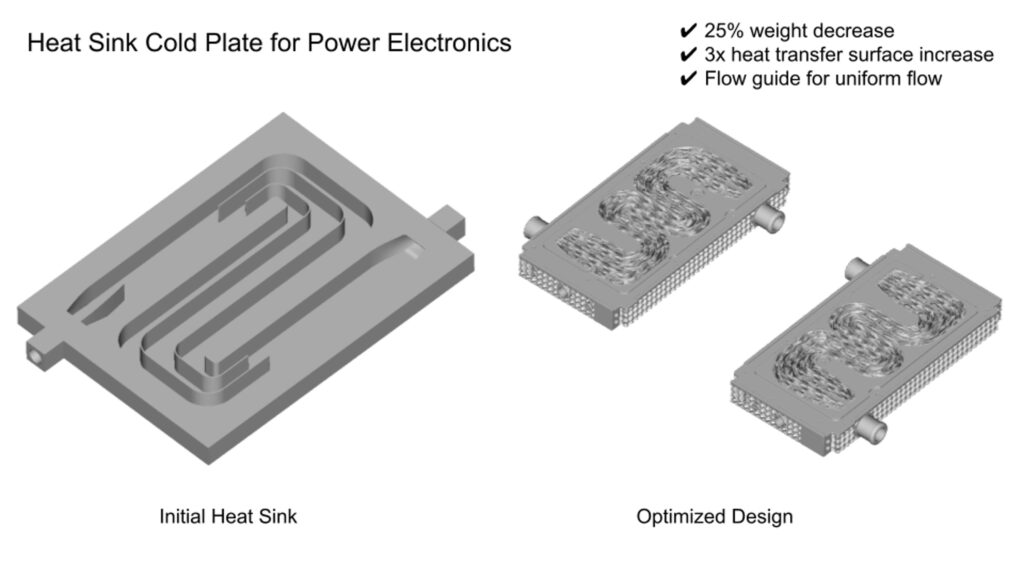
pROBLEM
The traction inverter controls the torque of the motors, so it is essential for the vehicle’s performance on the road and track.
The project goal was to design a high-efficiency plate that was lighter and more compact than the conventional component, so we developed a heat exchanger using additive manufacturing technologies and advanced engineering software.
SOLUtion
Starting from the component made by milling from solid, we detected the non-uniformity of the flow near the curvatures of the duct and the insufficient heat exchange surface of the heat sink. We redesigned the component with a design approach free from traditional design constraints.
development
After several design iterations, the final heat sink features:
- Maximized heat transfer surface.
- External lattice structure that minimizes weight, ensures manufacturability and promotes convection cooling.
- A modular design that allows for better positioning of the plates.

Intro
Taking inspiration from the structure of shark scales, we generated a directional lamellar geometry that conforms to the cold plate duct and facilitates flow around the corners of the channel.
We used basic mathematical equations to create a two-body field that describes the midplane and iso-surfaces of the duct channel. Then, we deformed a gyroid lattice along the X and Y directions to guide the flow around the curves. Finally, we increased the thickness of the structure and joined it to the external cell.
The result was flow guides that increase the heat transfer surface area by 300% and eliminate turbulent flow along curves.
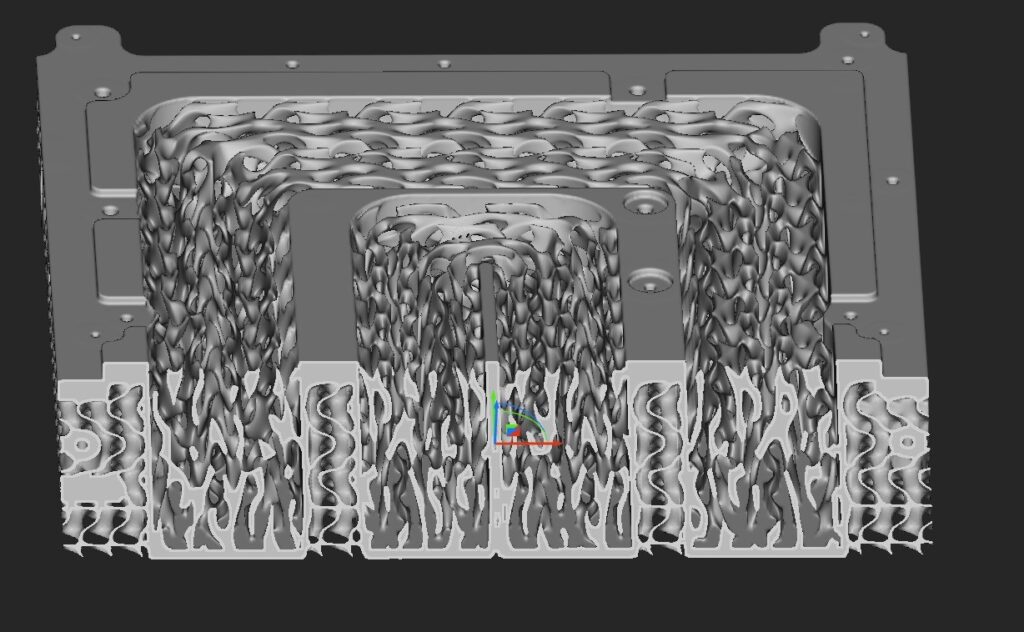
Immagine da progetto grabcad “cae-shifter-for-bmw
The project
In 2021, the Dynamis PRC team competed in the Formula SAE Electric vehicle category for the first time with a brand new race car. Dynamis worked with Puntozero to develop a lightweight, more efficient cooling system for their high voltage traction inverter to ensure it could withstand track conditions. The component was made in DMLS using M4P’s pure material.
The challenge was to design a high-efficiency cold plate that was lighter and more compact than the conventional component.
Development
For the external structure of the heatsink, we chose a TPMS lattice structure: diamond.
The external lattice reduced the component’s weight and manufacturing cost, improved its manufacturability, and increased the contact surface area with the power electronics to aid heat transfer.
Starting from multiple engineering and manufacturing requirements, we also optimized the external reticle design.
For example, the thickness of the grating progressively decreases as it moves away from the contact surface with the power electronics. Thicker areas promote heat transfer, increase heat sink efficiency, and provide a solid surface that can be easily supported during 3D printing. On the other hand, thinner struts facilitate dust evacuation during post-processing and promote heat dissipation by convection with the surrounding air.
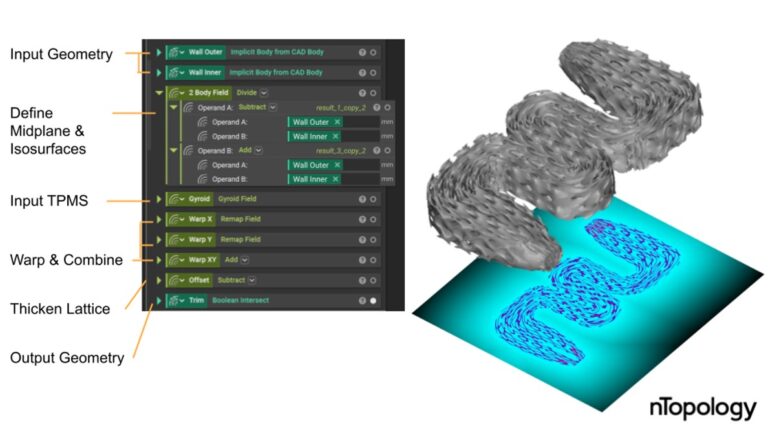
The external diamond TPMS lattice significantly reduced the overall weight of the system by 25%, providing the necessary rigidity.
As a result, these complications lead to an expensive and slower process than AM and with lower performance results. Obviously the choice of a metallic material (we are talking about classic production) is necessary for the result you want to obtain but in the world of 3D printing you can think differently, there are also other paths.
Form = Function
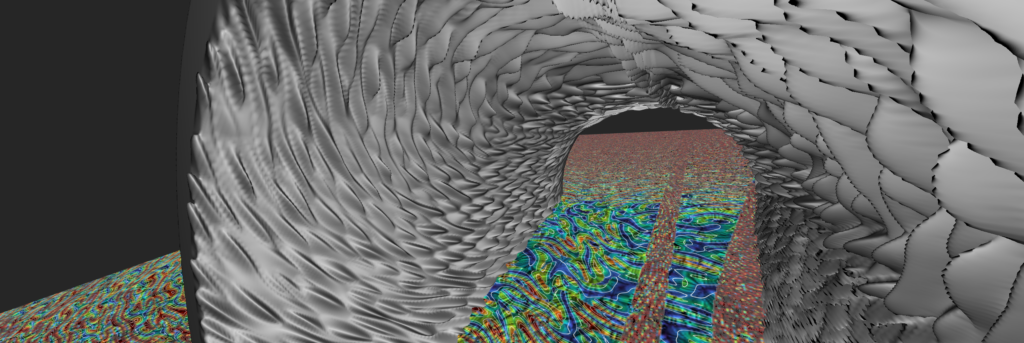
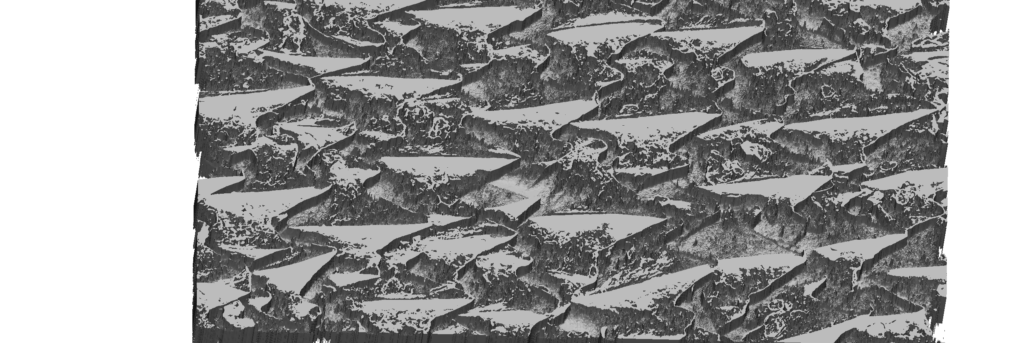
““Thanks to nTopology, we were able to automatically generate the lattice infill. After validating the geometry of the flow guides, we packaged the lattice workflow inside a custom block, making it reusable on any future geometry. ” “
The project in numbers
Increased exchange surface
+300%
Weight reduction
- 25%
Accuracy
deviazione < 200 micron
